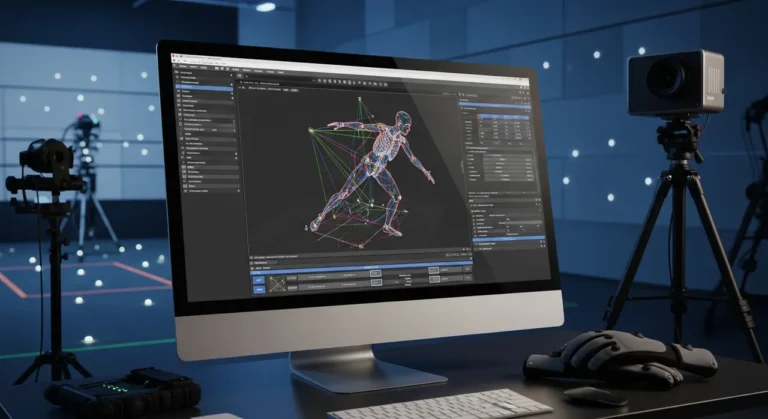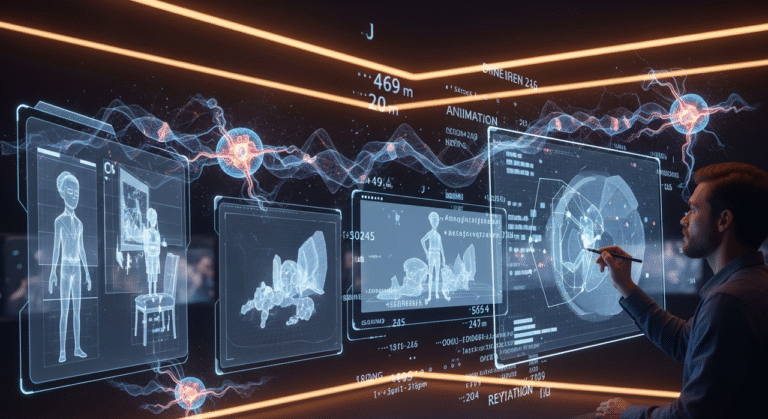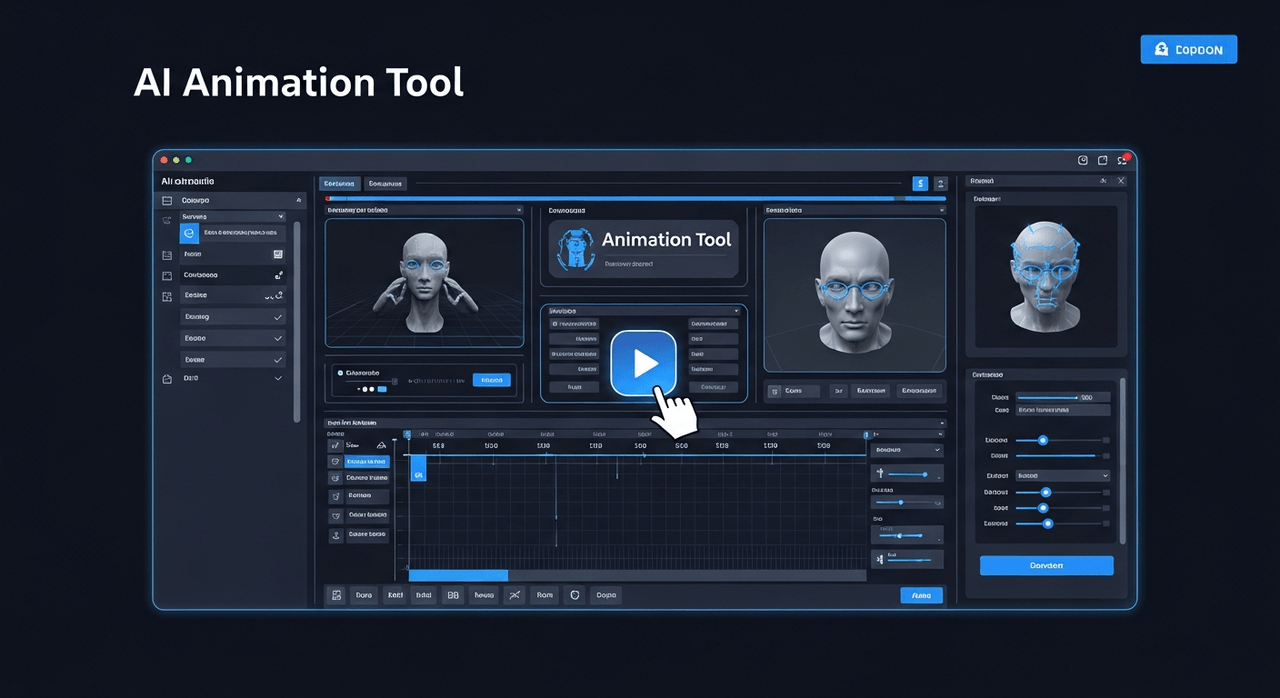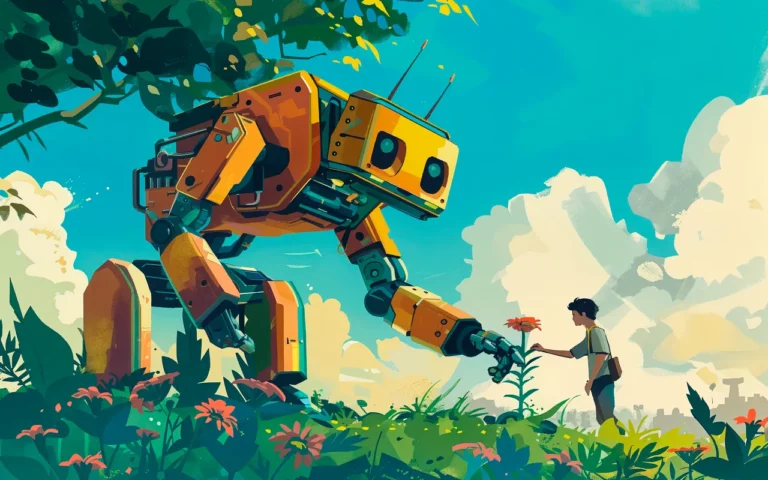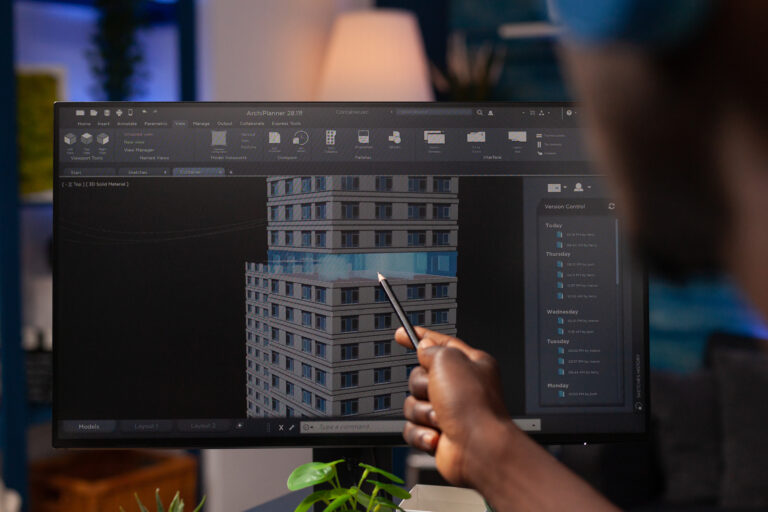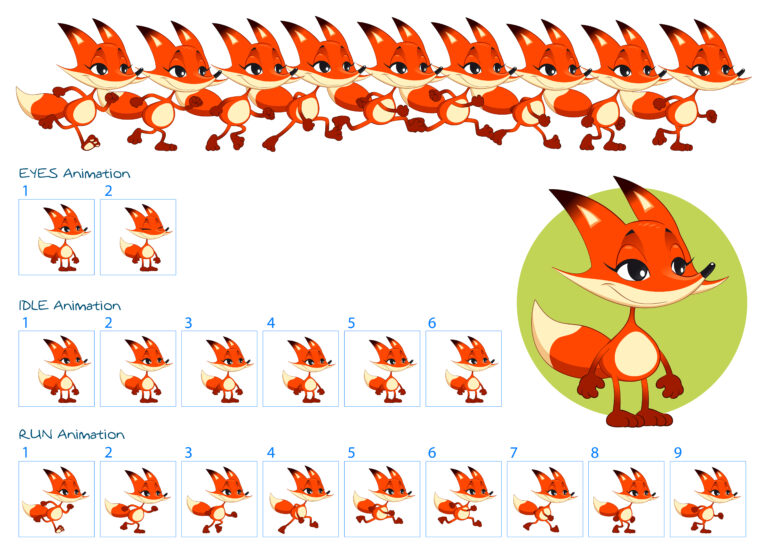The term “metaverse” has been buzzing around the tech world for a while now, but it’s no longer just a buzzword—it’s becoming an immersive, evolving digital universe!
As this virtual landscape grows, new technologies and creative methods are shaping the way we interact, socialize, and create more than ever.
Among these innovations, one of the most compelling is the fusion of crypto animation in virtual worlds.
When animation meets cryptocurrency, a dynamic and exciting ecosystem emerges that offers endless possibilities for creativity, commerce, and engagement in the metaverse.
From animated avatars to interactive animated environments, the combination of animation and crypto in these virtual worlds sets the stage for a new digital renaissance.
In this article, we will explore the role of animation in virtual worlds, how cryptocurrency is integrated into animated experiences, and what the future holds for this cutting-edge intersection!

Need Animation Services?
Visit our Animation Service page to see how we can help bring your ideas to life!
What is the Metaverse?
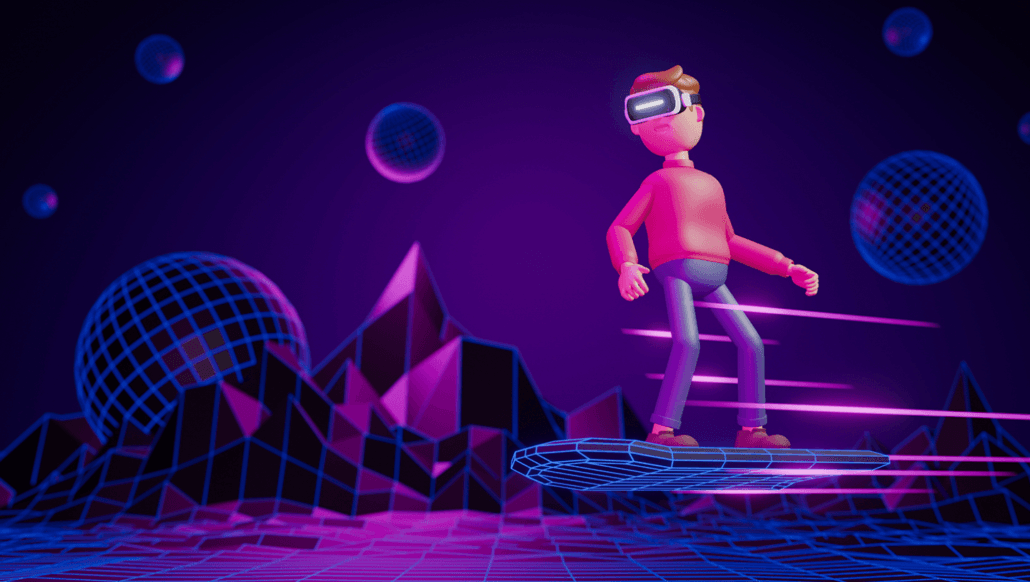
The metaverse is a virtual, collective space where physical reality and digital experiences blend seamlessly.
To put it more explicitly, the metaverse is a shared, persistent, and interconnected environment where people can socialize, play, create, and work.
The key components that make up the metaverse include:
- Virtual Reality (VR) and Augmented Reality (AR): These technologies allow users to experience and interact with the metaverse in immersive ways. While VR places users in a completely virtual environment, AR adds digital elements to the real world, creating experiences that can never stop surprising us!
- Interactivity: Unlike traditional digital spaces where users are passive, the metaverse allows people to actively engage with others, virtual objects, and the environment itself.
- Persistent Worlds: Unlike isolated digital experiences, the metaverse operates continuously.
Your actions in the virtual world come with relevant consequences and affect the environment, and the world itself evolves in response to your actions. - Economy: Cryptocurrencies and digital assets (like NFTs) power the metaverse’s economy.
This interactive transaction allows users to buy, sell, and trade digital items, including virtual land, clothing for avatars, and rare collectibles.
Platforms such as Decentraland, The Sandbox, and Meta’s Horizon Worlds are the leading prime examples of metaverse spaces.
These platforms are built using advanced technologies, with animation playing a crucial role in making the metaverse world vibrant, interactive, and engaging.
What is the Animation’s Role in Shaping Virtual Experiences?
At its core, animation services are what transform a virtual environment from a static series of images into a dynamic, tangible world.
The role of animation in the metaverse extends far beyond mere visual aesthetics—it shapes how we experience these virtual environments, interact with others, and create digital identities.
In the following, we will discuss how animation not only shapes but also deepens our virtual experiences:
Bringing Characters to Life
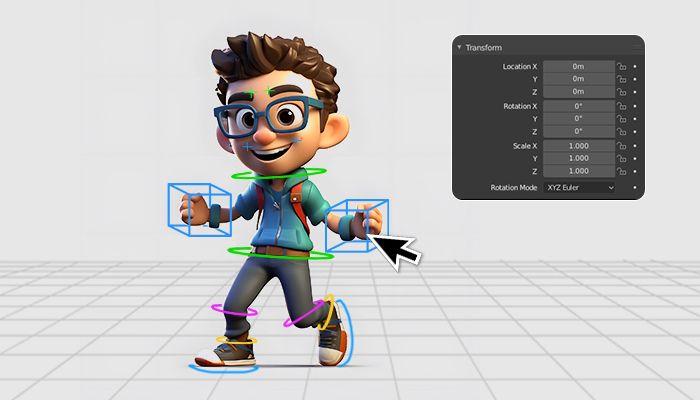
In the current metaverse, avatars serve as our digital representations.
Animation is the base of the character design process that gives these avatars movement, expression, and personality. Customizing avatars—whether through clothing, accessories, or even virtual hairstyles—wouldn’t be as engaging if animation didn’t allow them to come to life.
- Avatar Creation: Animation is at the heart of creating lifelike or fantastical avatars.
Users can design their avatars to reflect who they are, or they can go wild and invent entirely new personas.
Through animation, avatars are no longer just static images—they are fully interactive and digital beings capable of emoting, moving, and interacting with the virtual environment. - Expressions and Movement: Whether you’re waving, dancing, or performing a high-five with another user, these movements have come to life through animation.
Techniques like motion capture, physics-based animation, and AI-driven motion algorithms make these interactions appear seamless and natural, aiming to create a more immersive and life-like experience.
Crafting Immersive Worlds
But the metaverse isn’t just about avatars—it’s about the worlds in which these avatars exist as well!
Animation is crucial in building dynamic, interactive environments that captivate users and make the metaverse feel alive.
- Animated Environments: Imagine a bustling city where the trees sway with the wind, digital billboards flicker with animations, and the water flows with the ebb and flow of the tide.
All of this is possible because of animation. Whether it’s a futuristic metropolis or a serene island paradise, animation gives life to every corner of the virtual world. - Interactive Elements: Animation doesn’t just decorate the world—it makes it interactive and alive!
When you walk up to a door, it opens! When you jump on a trampoline, you bounce! When you pick up an item, it moves in your hand! These basic exemplary animations make users feel like they are genuinely interacting with their environment rather than simply viewing it.
Enabling Social Interactions
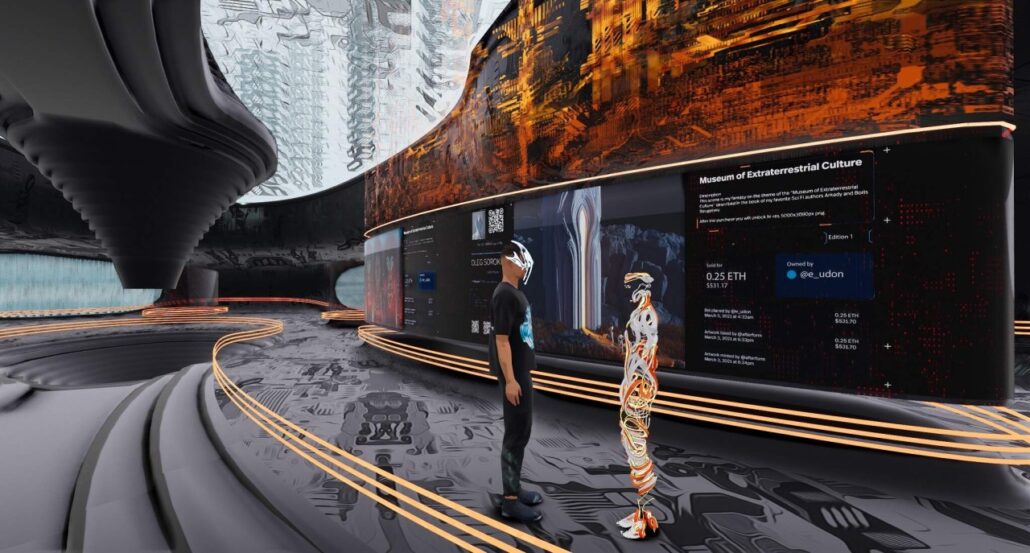
Serving to the core of human beings, virtual worlds also include social interactions!
The social element of the metaverse is perhaps one of its most exciting aspects, and animation facilitates meaningful connections by allowing users to engage in lifelike interactions with others in real time.
- Socialization through Animated Gestures: In the metaverse, you can high-five, hug, or give a thumbs-up to other users through animated gestures.
These gestures add layers of emotion and authenticity to virtual interactions, making them more genuine and human-like. - Shared Experiences: Virtual events like concerts, festivals, and sporting events rely heavily on animation to bring immersive and engaging experiences to life.
Animated stages, performers, and special effects ensure that these events are not only captivating and exciting but also realistically detailed!
Integrating with Virtual and Augmented Reality
Blending virtual reality (VR), augmented reality (AR), and animation will lead to even more immersive experiences in the metaverse.
Creating art for VR games with advanced animation techniques has become a significant part of this thriving industry.
As VR and AR technologies advance, users will be able to interact with animated environments and characters in more tactile and physical ways. Animation will no longer just be something you watch; it will become something you physically engage with, altering how you perceive the virtual world!
Crypto Integration in Animated Metaverse Content
Now that we’ve discussed how animation powers the virtual experience, it’s time to explore how cryptocurrency is integrated into the metaverse.
Crypto plays an essential role in enabling virtual economies and empowering creators in animated worlds in several ways:
1. Non-Fungible Tokens (NFTs):
NFTs are unique digital assets that are stored on a blockchain.
They can represent anything from digital art to virtual real estate, and they have become a central component of the metaverse economy.
In the realm of crypto animation, NFTs have created new opportunities for creators and users to monetize their work and participate in the virtual economy.
- Animated NFTs: Artists can create and sell animated digital art, such as short animated films, GIFs, or even full-length shows, as NFTs.
These digital assets are unique, and because they are tied to the blockchain, they can be bought, sold, and traded securely—platforms like OpenSea and Rarible host marketplaces where these animated NFTs are bought and sold. - Virtual Clothing and Accessories: As avatars in the metaverse become more personalized, users can buy animated clothing or accessories for their digital personas.
These items are often tokenized as NFTs, enabling users to own and trade them.
For instance, a rare, animated jacket for your avatar could become a collectible item with real-world value!
Learn more about the best NFT art tips to make the most out of this new trend!
2. Virtual Real Estate!
The metaverse is not just a place to socialize and play—it’s also a growing economy where users can buy and sell virtual land.
Animation enhances these digital spaces, making them vibrant and interactive for potential buyers!
- Building Animated Spaces: In virtual worlds like Decentraland and The Sandbox, users can purchase parcels of land and build their own environments.
These lands can range from animated art galleries to interactive museums or virtual storefronts. - Monetization through Animation: Users can attract visitors and monetize their space by creating engaging animated experiences on their land.
For example, you could create a virtual theme park with animated rides and charge other users to experience the attractions in your area!
3. Tokenized Economies:
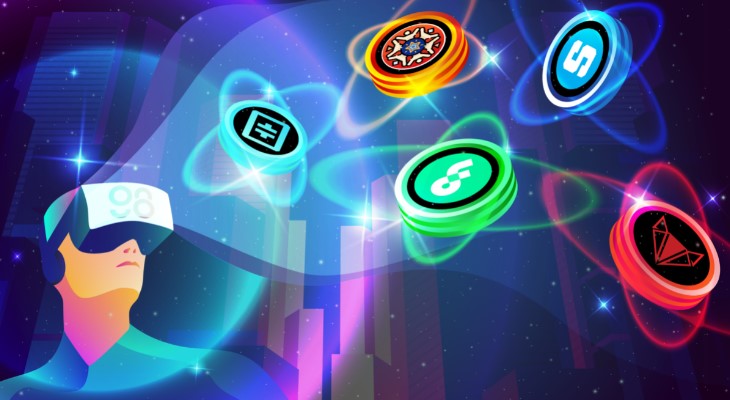
One of the most exciting aspects of the metaverse is its economy.
Through cryptocurrency, users can buy and sell virtual assets, participate in gaming economies, and even earn income!
Animation and crypto intersect to create new revenue models, such as pay-to-play games or reward-based content creation.
- Play-to-Earn Games: Many metaverse platforms integrate games where users earn cryptocurrency by completing tasks or achieving certain milestones.
Animation makes these games visually appealing, while crypto ensures users can gain real value from their time and efforts.
Learn more about the top animation styles for explaining cryptocurrency projects and how they are utilized in tokenized economies. - Monetizing Creative Work: Animators can use blockchain technology to tokenize their work, ensuring that they retain ownership and earn royalties every time their creation is used, resold, or traded. This decentralized model gives creators more control and financial reward than traditional platforms.
4. Decentralized Content Creation:
The growing trend of decentralization is one of the most impactful developments in the metaverse, where animation and crypto intersect.
Decentralized platforms allow creators to retain control over their work, earning royalties directly from users without intermediaries or corporate control.
As a creative medium, animation will thrive in this decentralized ecosystem, enabling more people to participate in creating digital art and virtual experiences.
In the future, blockchain technology may enable decentralized content creation hubs where animators can collaborate, sell their work, and directly connect with their audience.
These platforms could foster a new wave of creativity, where anyone, anywhere, can contribute to building virtual worlds, from 3D assets to entire interactive experiences.
How Does Animation Intersect with Crypto in the Metaverse?
The intersection of animation and crypto is where the metaverse really begins to shine.
Let’s explore how these two forces work together to build a vibrant and sustainable virtual world:
Monetizing Digital Art:
Through NFTs, animators can mint and sell their animated creations as unique digital assets.
These transactions open up new opportunities for artists, who can now directly connect with buyers and receive royalties for every subsequent sale.
Whether it’s a digital short film, an animated background for a virtual world, or an avatar accessory, animation’s role in the creation of NFTs is transforming how artists monetize their work.
Blockchain as a Platform for Creativity:
Blockchain isn’t just for cryptocurrency—it’s also becoming a platform for creating and sharing creative content.
Tools like Ethereum and Polygon enable animators to create digital experiences that live on the blockchain, such as animated games or virtual performances.
The decentralized nature of blockchain ensures that artists are compensated fairly for their work without the need for intermediaries.
The Rise of Virtual Economy:
The virtual economy within the metaverse is flourishing, driven by both animation and cryptocurrency.
Through the integration of crypto and animation, creators, developers, and users are now able to create, own, and trade digital assets seamlessly across virtual worlds.
This symbiotic relationship ensures a sustainable ecosystem where creators can monetize their work and users can participate in an economy that mirrors real-world financial systems.
- Virtual Goods and Animated Assets: In the metaverse, animated assets—such as dynamic avatar skins, animated virtual clothing, and interactive NFTs—become part of the larger digital economy.
These digital goods can be bought using cryptocurrency, further integrating both animation and crypto into the virtual economy.
Moreover, animated assets are increasingly used in games, virtual stores, and other interactive environments, creating opportunities for more complex economic transactions. - Virtual Events and Performances: Pushing the boundaries of virtual experiences, concerts, fashion shows, and live-streamed experiences are becoming a major part of the metaverse.
Animation enhances these events by creating dazzling, immersive environments, while cryptocurrency offers creators the opportunity to earn through ticket sales, sponsorships, and tips in the form of digital currency.
This integration of animation and crypto enables creators to generate revenue from their virtual events, providing a platform for both art and commerce.
Interoperability Across Virtual Worlds:
One of the most exciting prospects for the metaverse’s future is interoperability—the ability for users to move their digital assets seamlessly across various virtual worlds.
As metaverse platforms grow, the integration of crypto animation services will become even more widespread. Users will be able to take their animated NFTs, avatars, and animated assets across different platforms without losing their value or functionality.
For example, you could purchase a rare animated NFT of an avatar skin in Decentraland and use it in The Sandbox or Somnium Space without any loss of quality or functionality.
This interoperability will enhance user experiences and provide new opportunities for monetization and creativity.
To Sum Up
The world of crypto animation in virtual worlds is still in its early stages, but its potential is limitless. As we look to the future, the intersection of crypto and animation will continue to evolve, with new technologies and creative possibilities shaping the way we experience the metaverse.
By combining animation’s creativity and engagement with cryptocurrency’s security and decentralization, the metaverse is growing into a complex and vibrant ecosystem where users can create, interact, and thrive in entirely new ways.
Animation serves as the soul of the metaverse, transforming static environments into dynamic, interactive spaces. It allows avatars to move, objects to animate, and entire worlds to come alive stunningly.
Meanwhile, cryptocurrency enables a sustainable economy where users can buy, sell, and trade digital assets in the most financially life-like manner!
As these technologies continue to mature, the metaverse will become a more integrated, immersive, and monetizable experience for creators and users alike.
The future of crypto animation in virtual worlds is one filled with opportunity, creativity, and endless possibilities.
Whether you’re an artist, a gamer, or a tech enthusiast, now is the time to get involved as the metaverse continuously unfolds and redefines the digital landscape.
